INTERNACIONAL
Theologian on ‘Conclave’ accuracy, expectations for next secretive event after Pope Francis’ death

Though controversial, one of the least contentious 2025 Oscar-nominated films was «Conclave,» an Edward Berger-directed mystery thriller starring Ralph Fiennes, Isabella Rossellini and Stanley Tucci, which brings to life the political and religious traditions regarding how Catholic cardinals elect a new pope.
The conclave will gather again in actuality as the Vatican revealed that Pope Francis, 88, the leader of the Catholic Church, passed on April 21, 2025, the day after Easter Sunday.
Though released in October 2024, «Conclave» struck a deep chord with viewers as Pope Francis’ declining health was made known to the public in February 2025. Pope Francis battled bilateral pneumonia in the months before his death.
POPE FRANCIS REVEALED BURIAL WISHES JUST DAYS AFTER BECOMING POPE IN 2013
In the film, «Conclave,» starring Ralph Fiennes, Isabella Rossellini and Stanley Tucci, cardinals gather to elect a new pope. (Robyn Beck/AFP via Getty Images)
The film closely follows the novel of the same name written by author Robert Harris.
«That was fairly accurate,» Dennis Doyle, professor emeritus at the University of Dayton in Ohio, told Fox News Digital.
Doyle taught at the Catholic research university for 40 years.
«There were just a few differences, like some of the Latin wasn’t exact, the carpet was red in the movie and its beige in real life,» Doyle said. «The seating arrangements were done very dramatically in the movie. They’re not exactly that way in real life. And even the way the voting was done was not exactly the same.»
WHO COULD BE THE NEXT POPE?

Pope Francis was elected pope in 2013, after Pope Benedict XVI stepped down from his role due to health concerns. (Gregorio Borgia/AP)
Despite the creative liberties, Doyle felt the film was «done very accurately.»
«I was surprised at how well it was done and how they were able to present the characters in a way that every character in a certain sense was sympathetic,» Doyle told Fox News Digital.
In preparation for the film, Doyle read the book twice.
«In the book, the character was transgender but didn’t go through with the operation,» Doyle said. «In the movie, the character was intersex, somebody who was born both ways, but still who didn’t go through with the operation.»
Some Catholics took to social media at the time the film was released to regard it as «anti-Catholic» and «dishonest».
WHAT IS THE PAPAL CONCLAVE: INSIDE THE ANCIENT PROCESS OF CHOOSING THE NEXT POPE
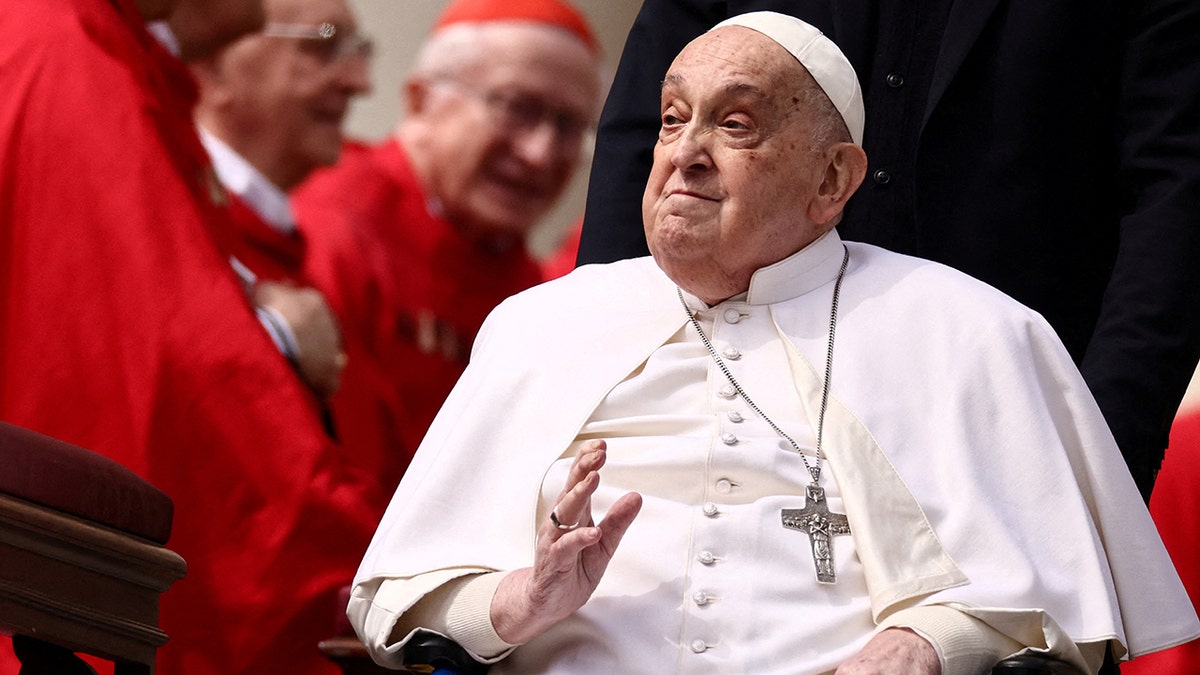
Dennis Doyle, professor emeritus at the University of Dayton, told Fox News Digital the Oscar-winning film «Conclave» was «fairly accurate» to the proceedings of a true conclave. (Yara Nardi/Reuters)
«I thought that everything in the movie was very realistic until the very end,» Doyle said. «I thought that, on a literal level, it really wasn’t very realistic. I don’t think that would happen, that somebody that was intersex would get elected pope. But symbolically, I thought the ending was very interesting.»
«I could see that the ending could be a turnoff for some Catholics,» he added.
Doyle said that, while «kind of far-fetched,» the film spoke to the question of the role of women in the church and whether the Catholic Church can become equal to men and women.
«In the film, all of the people serving the cardinals are sisters,» Doyle said. «They’re all nuns and in real life, in that building, there’s simply a staff that works in that building, and they would be the people who would put out the meals and who would change the beds and that kind of thing.»
PHOTO GALLERY: POPE FRANCIS THROUGH THE YEARS
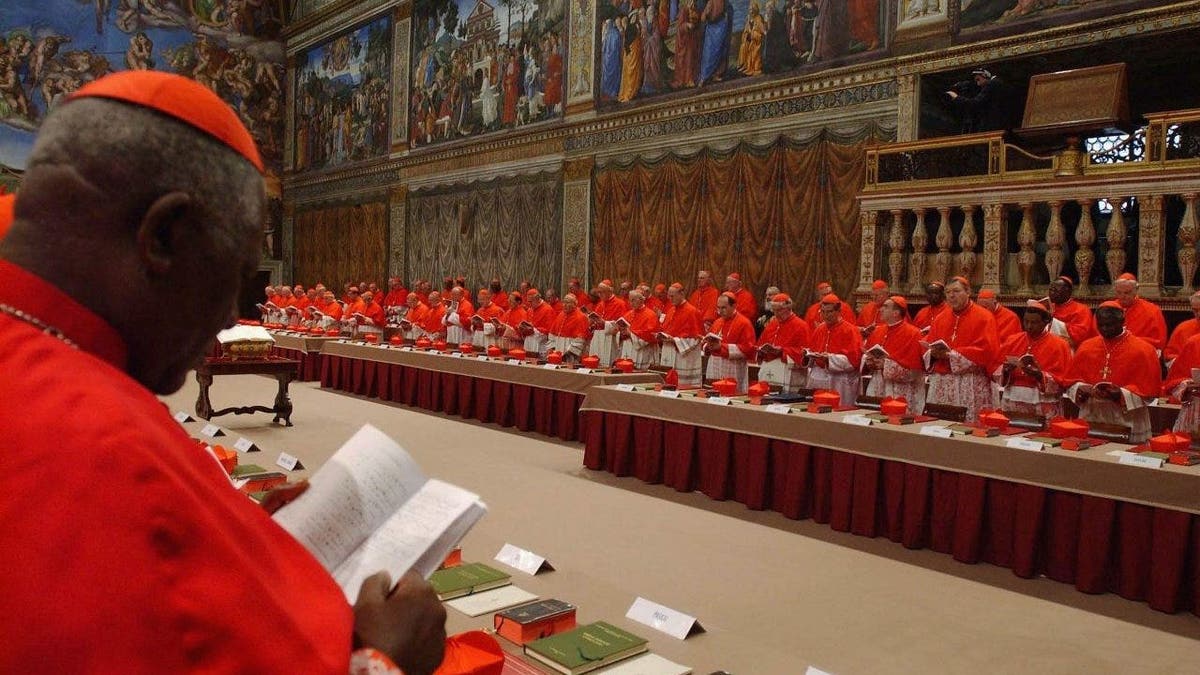
Catholic cardinals will gather for a papal conclave in the weeks following Pope Francis’ death on April 21, 2025. (Arturo Mari, Vatican Pool)
The deeper issue, Doyle said, is that the film portrays men in leadership roles and women as servants.
«The conversation about transgender is relatively recent [in the church],» Doyle said. «I really think that the conversation is more in the United States and Europe than it is in the Catholic Church globally or even necessarily in Rome.»
The Vatican released a declaration, Vatican’s Dignitas Infinita, in 2024 where Pope Francis condemned gender theory. The document asserted that attempts to alter an individual’s immutable gender are ultimately misguided attempts to play God.
«You could watch this whole movie and until the last two minutes it’s not an issue in the film. It doesn’t really come up. There’s a couple of foreshadowings of what the conclusion is going to be, but the movie is not about that,» Doyle said.
Following Pope Francis’ death, Doyle believes the newly released film will generate interest in the Catholic Church.
CLICK HERE TO GET TO THE FOX NEWS APP
«It may make people more aware that there is a lot of politicking that goes on and that is an interesting theme in the movie and in the book,» he said. «I don’t think it will really have any impact on how people think about the church other than to maybe in general, it makes the ideal of the conclave interesting.»
«Conclave» was nominated for a slew of 2025 Academy Award nominations, including Best Picture and Best Actor, and won for Best Adapted Screenplay.
INTERNACIONAL
EXCLUSIVE: Franklin Graham leads ceremony as Samaritan’s Purse gives armored ‘bulletproof’ ambulance to Israel

JERUSALEM – As Israel continues to recover from the deadly Hamas attacks of October 2023, Samaritan’s Purse is stepping in to help.
The Christian relief group has now given 20 ambulances to Magen David Adom, Israel’s national emergency medical service. A total of 42 are planned, with 28 being armored to handle attacks.
At a ceremony outside the Tower of David in Jerusalem, Franklin Graham, president of Samaritan’s Purse, dedicated the newest ambulance alongside former Governor Mike Huckabee, MDA leaders, and Israeli terror survivors.
The ambulance is equipped with a mobile intensive care unit and can operate under fire.
FORMER IDF SOLDIER GIVES HOPE, BUILDS RESILIENCE IN TRAINING SEVERELY INJURED SOLDIERS
Franklin Graham (center), president of Samaritan’s Purse, stands with Ambassador Mike Huckabee (left) and MDA Director General Eli Bin (right) in front of the newly dedicated armored ambulance at the Tower of David in Jerusalem.
The funds for the vehicle came from Pastor Greg Laurie and his church, Harvest Christian Fellowship. Laurie told those gathered, «We want to say as Christians that we stand with Israel. You’re not alone.»
Franklin Graham read from the Bible, saying that Abraham was like a first responder when he rescued his nephew Lot.
«Abraham was the MDA of his generation,» Graham said. He also took time to speak directly to three women who had lost loved ones or had been held hostage by Hamas. One of them, Karina Engel, shared her emotional story.
Engel’s husband, Ronen, was killed defending their home, and she and her two daughters were kidnapped and taken to Gaza. They were held for 52 days before being released. Ronen’s body is still being held by Hamas.
WEDDING OF PARAMEDICS TAKES PLACE WITH AMBULANCE AS BACKDROP: ‘FELT ONLY RIGHT’
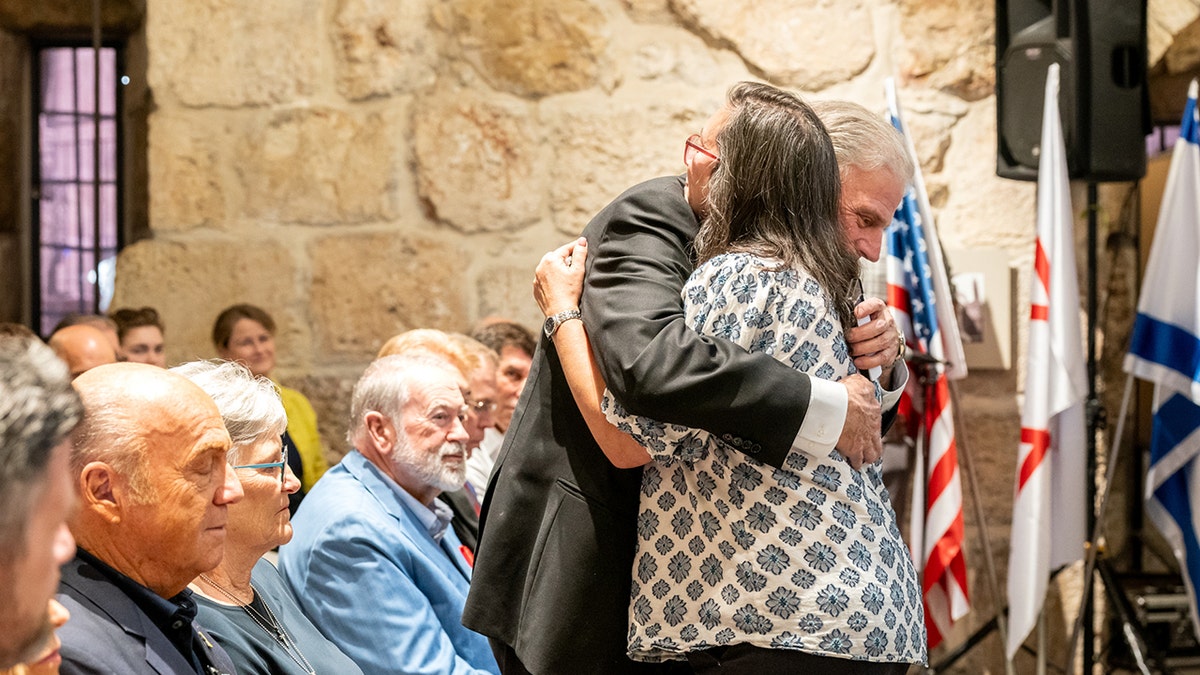
Franklin Graham embraces Karina Engel, a hostage survivor, during an emotional moment at the ambulance dedication ceremony in Jerusalem. Engel’s husband was killed in the October 2023 Hamas attacks. (Shealah Craighead via Samaritan’s Purse)
Karina told the crowd that a Samaritan’s Purse ambulance, dedicated in her husband’s memory, is now stationed near their home.
«Every morning when I leave for work, I say ‘good morning’ to Ronen,» she said through tears. She then placed a yellow ribbon on Graham’s jacket, honoring those still held hostage.
Mike Huckabee spoke at the ceremony and said the need for an armored ambulance shows how serious the threat still is. «This is an occasion brought about because of suffering,» he said.
«Thank God for Samaritan’s Purse, Harvest Christian Fellowship, and the people who risk their lives to help others.»
Magen David Adom leaders praised the donation. Director General Eli Bin said the ambulance «will become part of our modern defense» and called it a symbol of «kindness and protection.»
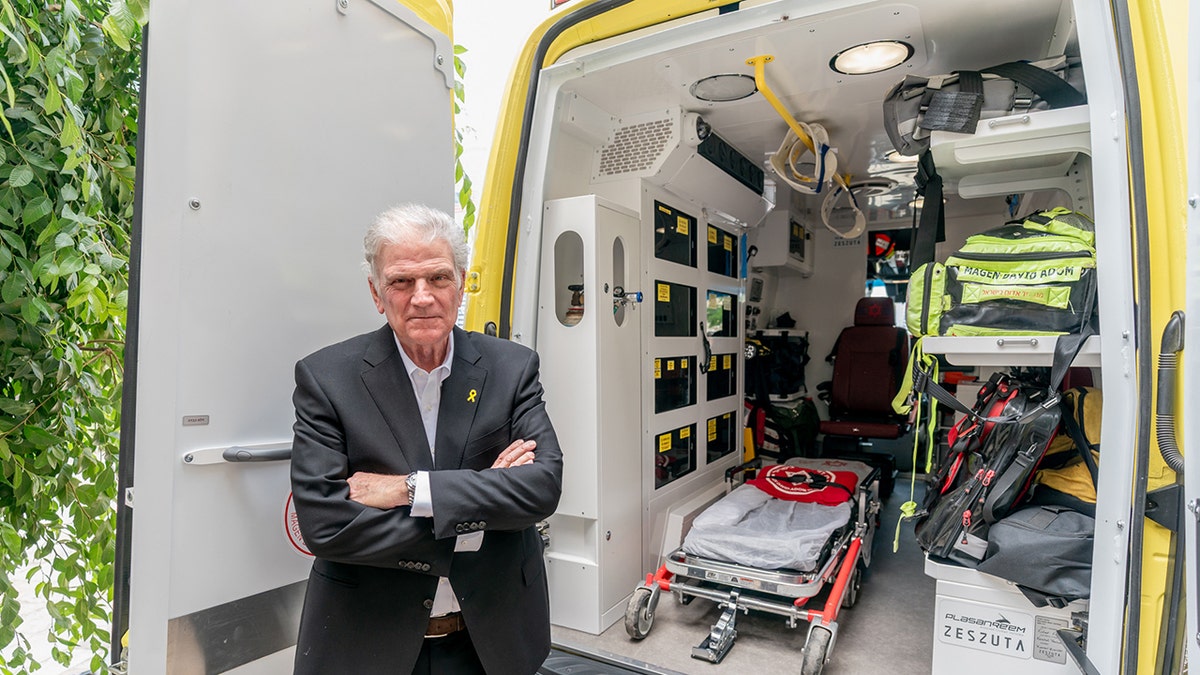
Franklin Graham stands beside the open rear doors of the new armored ambulance in Jerusalem. The vehicle is equipped with a mobile intensive care unit. (Shealah Craighead via Samaritan’s Purse)
Gilad Erdan, global president of MDA, said Samaritan’s Purse «came to Israel’s aid in its time of greatest need.»
Edward Graham, a military veteran and Franklin Graham’s son, said in a statement that he has seen the value of quick medical help in combat zones.
«We do this because God loves Israel,» he said. «We pray this equipment will save lives and bring glory to God.»
CLICK HERE TO GET THE FOX NEWS APP
The ambulance carries a Bible verse from Jeremiah 29:11 on its side: «For I know the thoughts that I think toward you, says the Lord, thoughts of peace and not of evil, to give you a future and a hope.»
The ceremony was held during Shavuot, the Jewish holiday that marks the giving of the Torah.
Twenty-two more armored ambulances are being built and are expected to arrive by the end of the year. Samaritan’s Purse says its work will continue as long as there is a need.
INTERNACIONAL
Telaraña letal: el golpe de drones ucranianos que derriba la ilusión de una retaguardia segura en Rusia

Este domingo 1 de junio, Ucrania ejecutó una operación sin precedentes, denominada “Operación Telaraña”, que implicó un ataque coordinado contra múltiples bases aéreas rusas, algunas ubicadas a miles de kilómetros de la frontera ucraniana. Esta operación se distinguió por su innovadora metodología de infiltración, empleo de nuevas tecnologías, capacidad de inteligencia, comunicaciones avanzadas, inteligencia artificial aplicada, adaptación de tecnologías existentes, buen OPSEC, y mucha paciencia. Según las autoridades ucranianas, más de 40 aviones militares, incluyendo bombarderos estratégicos y aeronaves de alerta temprana, fueron afectados por la operación. El presidente ucraniano, Volodymyr Zelenskyy, declaró que se desplegaron un total de 117 drones en la operación. El ataque ha sido calificado como un “golpe importante” para los servicios de inteligencia rusos y desafía la percepción de seguridad en el interior de Rusia. La operación, si se confirma la magnitud de los daños, sería un “gran bochorno” para las agencias militares y de inteligencia de Rusia. La capacidad de Rusia para restaurar estas aeronaves, especialmente los modelos Tu-95, Tu-22 y Tu-160, que ya no se producen, sería extremadamente difícil. Aunque Rusia confirmó los ataques y los daños en algunas regiones, la magnitud exacta de las pérdidas no ha sido verificada de forma independiente.
Esta operación representa un hito en la evolución de la guerra con drones, demostrando la capacidad de Ucrania para proyectar poder de manera asimétrica y el creciente papel de la IA en operaciones militares. Las implicaciones estratégicas y tácticas son profundas, desafiando las defensas aéreas tradicionales rusas, alterando la percepción de seguridad en el interior de Rusia y sentando un precedente para el futuro de la guerra de alta tecnología.
Los drones ucranianos tuvieron como objetivo aeródromos militares en al menos cinco regiones rusas distintas: Múrmansk, Irkutsk, Ivánovo, Riazán y Amur. Entre las bases aéreas específicas identificadas como objetivos se encuentran la Base Aérea de Olenya en Múrmansk (1.800-2.000 km de Ucrania), y la Base Aérea de Belaya en Irkutsk (4.200-6.000 km de Ucrania). El ataque a Irkutsk fue particularmente notable considerando la enorme distancia a la que se encuentra de Ucrania. Tal es su particularidad que el gobernador local, Igor Kobzev, confirmó que era la primera vez que se avistaba un dron ucraniano en la región. Cabe destacar que algunas fuentes mencionan un posible ataque a la “sede de la Flota del Norte de Rusia, hogar de submarinos nucleares” en el Mar del Norte, sin embargo, no contamos con suficiente evidencia verificable como para aseverar el hecho como confirmado.
La operación fue el resultado de una planificación meticulosa que se extendió por más de un año y medio. En primera instancia cabe destacar el rol central de los servicios de inteligencia para lograr el contrabando encubierto de drones a gran profundidad en el territorio ruso. Fuentes rusas afirman que la geolocalización muestra que los drones FPV ucranianos utilizados en los ataques a las bases aéreas fueron ensamblados dentro de un almacén alquilado en 28A Sverdlovsky Trakt, Chelyabinsk, Rusia. La instalación reclamada se encuentra justo cerca de la frontera con Kazajistán, posiblemente una ruta de suministro para componentes. Los drones fueron ocultos dentro de contenedores improvisados equipados con techos retráctiles, que luego fueron transportados en camiones. Al llegar a las cercanías de las bases aéreas objetivo, los techos se abrieron de forma remota, permitiendo que los drones fueran lanzados para ataques repentinos desde corta distancia. Este método facilitó los ataques diurnos, tomando por sorpresa a las fuerzas rusas. Evidencia visual de redes sociales y material de archivo publicado por el Servicio de Seguridad de Ucrania (SBU) mostró drones ascendiendo desde el interior de contenedores y, en algunos casos, personal ruso intentando detenerlos. Notable también que posterior al despliegue de los drones ocurrió la destrucción de los lanzadores, lo que probablemente tenga que ver con un mecanismo de autodestrucción para entorpecer la investigación, así como la emulación de la tecnología empleada por Ucrania.
La estrategia de infiltración y lanzamiento empleada en la “Operación Telaraña” representa una innovación táctica significativa que elude fundamentalmente los sistemas de defensa aérea tradicionales de largo alcance. Al lanzar los drones desde dentro del territorio ruso, la operación explotó los “puntos ciegos” inherentes a la extensa red de defensa aérea de Rusia, particularmente contra objetivos más pequeños y de vuelo bajo, como los drones FPV o cuadricópteros. Este enfoque reduce drásticamente el tiempo de vuelo de los drones y su exposición a la interceptación, lo que aumenta la probabilidad de impactos exitosos. El uso de “pequeños cuadricópteros” a la luz del día sugiere además una sorpresa táctica calculada, ya que Rusia podría no haber anticipado que drones tan pequeños y de corto alcance operarían tan profundamente o durante el día. Este método demuestra una comprensión sofisticada de la postura defensiva del adversario y una solución creativa para superar las barreras geográficas y tecnológicas.
Una característica definitoria de este ataque fue la participación explícita de drones guiados por IA, lo que marca un paso significativo en la aplicación práctica de la IA en el combate letal. En el último año se había apreciado diferentes esfuerzos rusos y ucranianos en el guiado por IA como respuesta a la creciente proliferación de elementos para el bloqueo de comunicaciones entre los operadores de drones y sus drones, por lo cual las partes probaban mecanismos de guiado terminal basado en IA. Pero en ese contexto la IA no demostró tener el nivel de maduración tecnológica necesaria para emplearse de forma efectiva, segura y fiable, lo que dio paso a la aceleración de planes de desarrollo de drones guiados por fibra óptica como alternativa a contrarrestar sistemas avanzados de guerra electrónica usada contra drones.

La inteligencia militar ucraniana, según los informes, llevó a cabo un esfuerzo extenso, introduciendo miles de imágenes de aviones bombarderos rusos en sistemas de inteligencia artificial. Imágenes posteadas en redes sociales por Vasyl Malyuk, jefe del Servicio de Seguridad Ucraniano, en las que se encuentra examinando planos y tomas aéreas, dan a entender la posibilidad de que la IA de los drones fue entrenadas con aeronaves presentes en museos militares ucranianos. Esta IA fue específicamente entrenada para reconocer estas aeronaves y ejecutar algoritmos de ataque en automático, lo que permitió la orientación autónoma. Eso es una solución efectiva para reducir el delay en comunicaciones entre el dron y su operador, pero sobre todo asegurar inmunidad ante contramedidas electrónicas.

Ucrania. Crónica desde el frente
eBook
La utilización de la IA para el reconocimiento de objetivos y la auto-orientación representa un salto cualitativo de los drones controlados a distancia a sistemas con un grado de toma de decisiones letales autónomas. Al integrar algoritmos que se hacen cargo del guiado terminal, la IA habilita el empleo de drones a distancias extremas sin requerir un enlace de datos permanente con el operador—un enlace que, por la latencia inherente y la exposición a interferencias o bloqueos de guerra electrónica y sistemas antidrones, resultaría vulnerable o directamente inoperable. Esto tiene varias ventajas militares y amplias implicaciones. En primer lugar, mejora la eficiencia y la escalabilidad, ya que los algoritmos de IA pueden procesar datos visuales e identificar objetivos de forma mucho más rápida y consistente que los operadores humanos, especialmente en un ataque en enjambre que involucra numerosos drones. Esto permite un mayor volumen de ataques simultáneos y potencialmente impactos más precisos en componentes críticos del objetivo, como tanques de combustible o motores. En segundo lugar, reduce la carga cognitiva y el riesgo para los humanos. Con la orientación autónoma, los operadores humanos pueden cambiar su enfoque de la guía individual de los drones a la dirección de la misión de alto nivel y la supervisión estratégica, lo que disminuye la carga cognitiva, permite operaciones coordinadas más complejas y minimiza la exposición humana a los riesgos directos del combate. En tercer lugar, y probablemente lo más crucial en esta operación, la IA puede ofrecer resiliencia a la guerra electrónica.
Esto es lo que se puede apreciar, y analizar, desde la limitada información hoy disponible. Por el momento queda claro que la capacidad de Ucrania para golpear el corazón de Rusia a miles de kilómetros, combinando la audacia de la infiltración clandestina con la precisión autónoma de la inteligencia artificial, demuestra que ninguna retaguardia es ya impenetrable. Esta operación resalta que el éxito de la inteligencia moderna va más allá de la mera recolección de datos; requiere una logística impecable y capacidades operativas encubiertas para capitalizar la información. Así como la “Operación Beeper” de Israel, que en 2023 deshabilitó miles de buscapersonas (beepers) de Hezbolá con explosivos en Líbano y Siria, demostró una sofisticada cadena de suministro y una ejecución precisa para llevar a cabo un ataque sincronizado, la “Operación Telaraña” es un testimonio de una inteligencia holística. No se trata solo de saber dónde está el enemigo, sino de tener la capacidad logística para colocar los medios de ataque en el lugar y momento precisos, incluso dentro del territorio adversario, y luego detonarlos.
Más allá del impacto inmediato en las fuerzas rusas, esta operación sienta un precedente escalofriante: la guerra moderna ya no es solo un conflicto de fuerzas armadas tradicionales, sino un campo de batalla donde los drones, la inteligencia, y la IA (entre muchos otros) son los verdaderos game-changers, capaces de desmantelar la percepción de seguridad de cualquier potencia, en cualquier lugar del mundo.
Dr. Andrei Serbin Pont, Analista Internacional y Presidente de CRIES
Europe,Military Conflicts,UNKNOWN LOCATION
INTERNACIONAL
Inside Jill Biden’s political rise amid her husband’s cognitive decline: Book

Former President Joe Biden‘s inner circle considers first lady Jill Biden one of the most powerful first ladies in history, CNN anchor Jake Tapper and Axios political correspondent Alex Thompson reveal in their new book, «Original Sin.»
Jill Biden, who has a doctoral degree in education and whom White House staffers called «Dr. B» for short, was a reluctant political spouse in the early days of her husband’s career. During his presidential campaigns and into his presidency, the first lady became his staunchest defender and a «political partner in addition to a spouse,» Thompson and Tapper wrote.
«Dr. B was a strong, protective force in the White House. She was also, without question, one of the chief supporters of the president’s decision to run for reelection, and one of the chief deniers of his deterioration,» the authors wrote.
President Donald Trump’s White House press secretary Karoline Leavitt said on Thursday that Jill Biden should have to answer for her complicity in the «cover-up» of Biden’s cognitive decline.
JILL BIDEN SHOULD HAVE TO ANSWER FOR ‘COVER-UP’ OF FORMER PRESIDENT’S DECLINE, WHITE HOUSE SAYS
President Joe Biden and first lady Jill Biden arrive in Marine One at East Hampton Airport on June 29, 2024, in East Hampton, New York. (AP Photo/Evan Vucci)
Leavitt pointed to how Jill Biden jumped in to defend her husband during their joint interview on «The View» this month as evidence the former first lady is still covering for her husband.
‘INTENSELY LOYAL’ JILL BIDEN AIDE DESPISED BY WHITE HOUSE STAFFERS, NEW BOOK CLAIMS
As Biden’s sister, Valerie «Val» Biden Owens, and his adult children, Hunter Biden and Ashley Biden, stayed away from Biden’s 2020 presidential campaign, Jill Biden took on a more prominent role, the book revealed.
«She weighed in on potential hires and reviewed many of the campaign ads before they were aired. She campaigned hard and peppered aides with questions about how many reporters would be at her events,» Tapper and Thompson said.
Jill Biden sat for job interviews for White House aide candidates, and she «kept score» of which staffers were most loyal, with the help of her most trusted aide, Anthony Bernal, the book revealed.
The White House began referring to Jill Biden’s «spousal programming» events on foreign trips, and her team would request talking points, which Tapper and Thompson said some national security officials found strange.
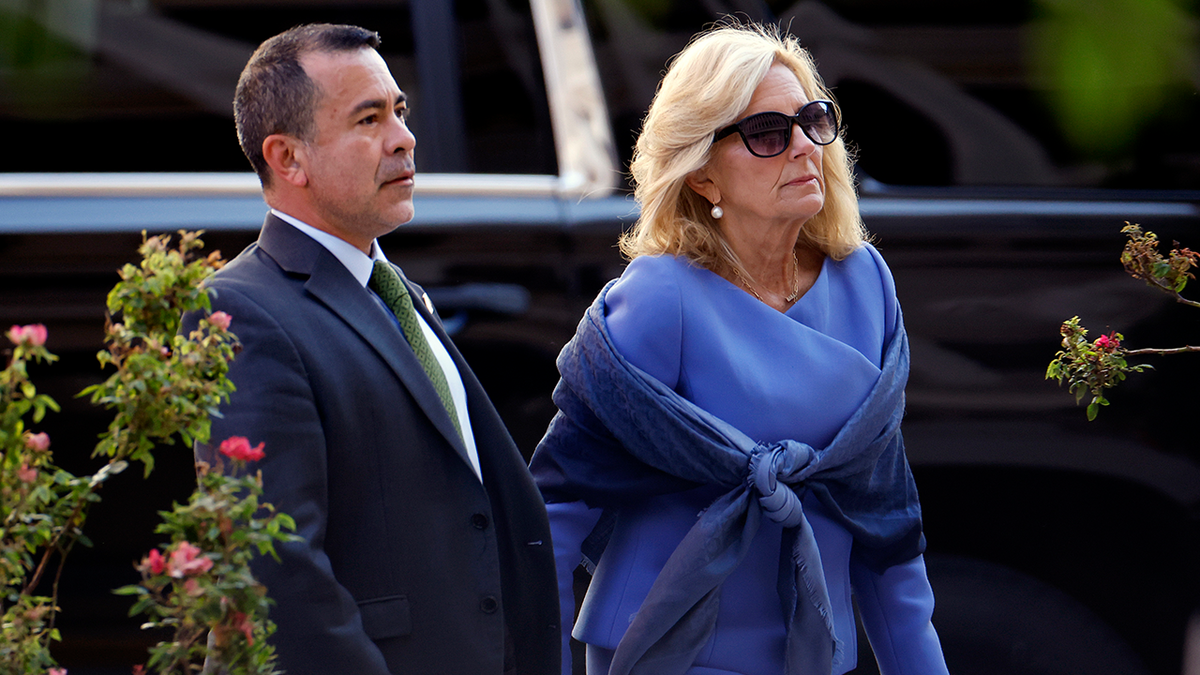
First lady Jill Biden and her senior advisor Anthony Bernal arrive at the J. Caleb Boggs Federal Building on June 7, 2024, in Wilmington, Delaware. (Kevin Dietsch/Getty Images)
«[Bernal] had already begun planning the first lady’s 2025 international travel schedule,» Tapper and Thompson said.
The first lady made an off-hand comment to French President Emmanuel Macron at a state dinner in 2022 about the difficult nature of campaigns and how she needed to stay in shape. Former House Speaker Nancy Pelosi’s daughter, Alexandra, overheard and found it odd, according to «Original Sin.»
«Alexandra then turned to the president and asked if they should toast to another campaign. He looked back at her like he didn’t understand. Alexandra thought her mom looked shocked. Everyone quickly gathered themselves. With Macron, they toasted to four more years,» the authors said.
Dr. B was particularly sensitive when asked about Biden’s age and ability, according to the authors.
After Biden’s consequential debate performance in the summer of 2024, The Associated Press reported that Jill and Hunter Biden were urging the president to continue his re-election campaign. Sources told AP the family «questioned how he was prepared for the debate by staff and wondered if they could have done something better.»
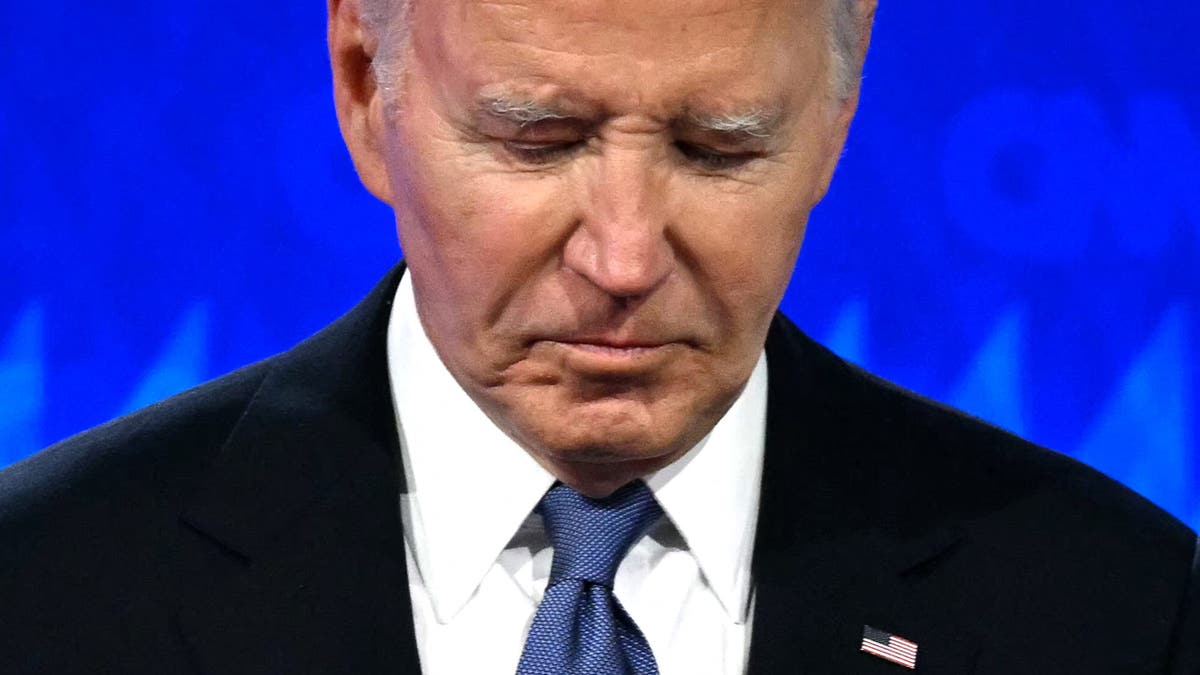
President Joe Biden looks down during his debate with former President Donald Trump at CNN’s studios in Atlanta on June 27, 2024. (AFP via Getty Images)
«Hunter privately talked about it as being the family against the world. People sensed a more manic quality in him post-debate. He was determined to save his dad,» according to Tapper and Thompson.
Soon after the debate, Jill Biden joined Sen. Debbie Stabenow, D-Mich., on the campaign trail. After defending the president’s re-election campaign to reporters, Stabenow brought up some of her colleagues’ concerns about Biden continuing in the race.
JILL BIDEN ACCUSED OF ‘ELDER ABUSE’ BY WASHINGTON POST COLUMNIST FOR PUSHING HUSBAND TO SEEK RE-ELECTION
«The First Lady didn’t answer the senator’s implied question, but she later fumed about it to White House staffers,» the book alleged.
A week later, Gov. Josh Shapiro, from the pivotal battleground state of Pennsylvania, told the president, «I have some concerns.» However, before Biden could fully respond, the first lady was ushering him away.
«Jill fumed with resentment about all the Democrats who she considered friends now pushing Biden out. She knew she had blundered in the aftermath of the debate with her belittling praise. She was only trying to help her husband in his moment of need. In the end, she told Biden: ‘This is your decision. This is for you to decide,’» according to the book.
CLICK HERE TO GET THE FOX NEWS APP
Fox News Digital has written extensively dating back to the 2020 presidential campaign about Biden’s cognitive decline and his inner circle’s alleged role in covering it up.
A Biden spokesperson did not immediately respond to Fox News Digital’s request for comment.
Politics,Biden Cover-Up,Joe Biden,Hunter Biden
-

 DEPORTE1 día ago
DEPORTE1 día agoA qué hora se juega el PSG vs. Inter de Milán por la final de la Champions League
-

 SOCIEDAD2 días ago
SOCIEDAD2 días agoLos famosos reaccionaron a los polémicos dichos de Diego Spagnuolo, titular de la Agencia Nacional de Discapacidad
-

 ECONOMIA2 días ago
ECONOMIA2 días agoCelebra Caputo: dos consultoras midieron la inflación de mayo por abajo del 2%, la menor en 5 años
















